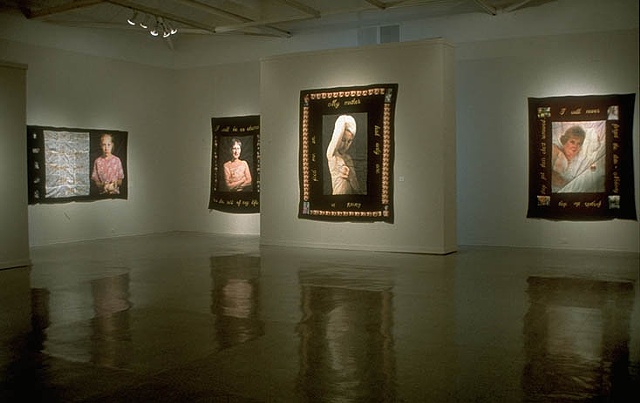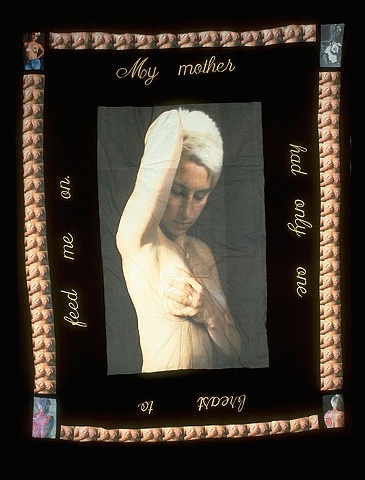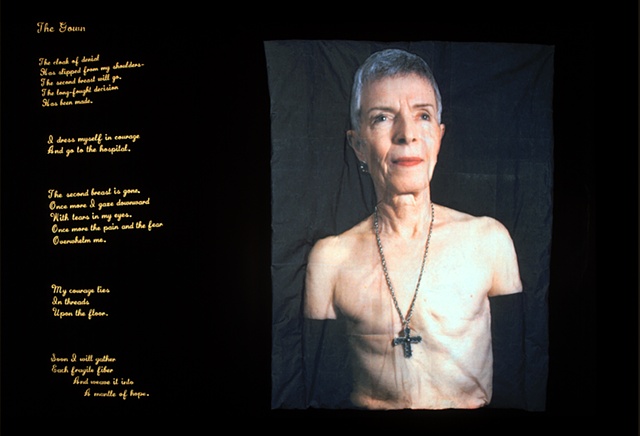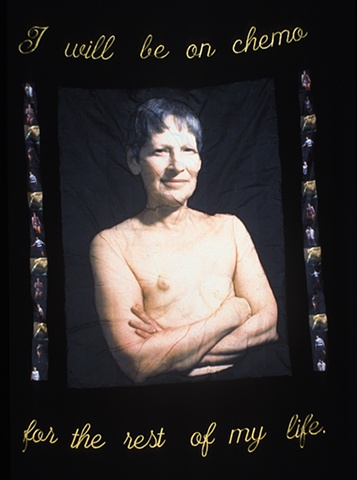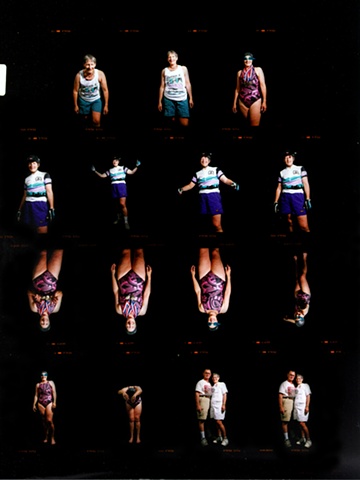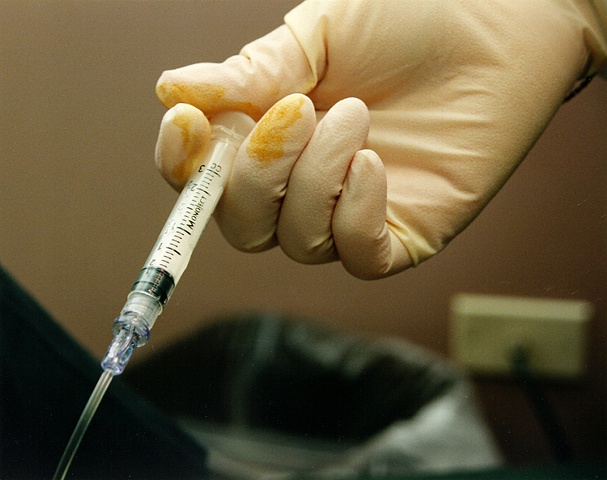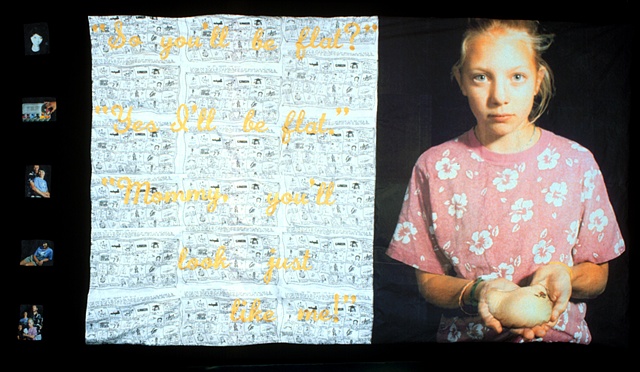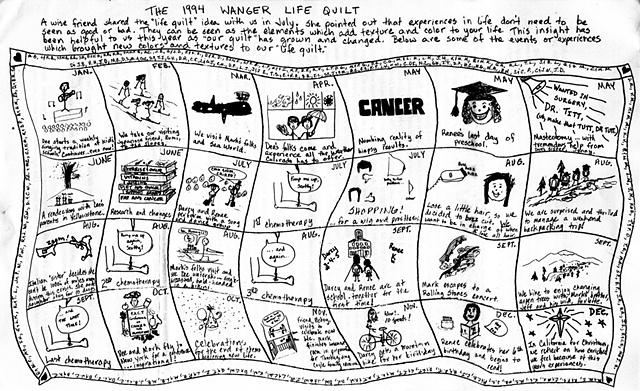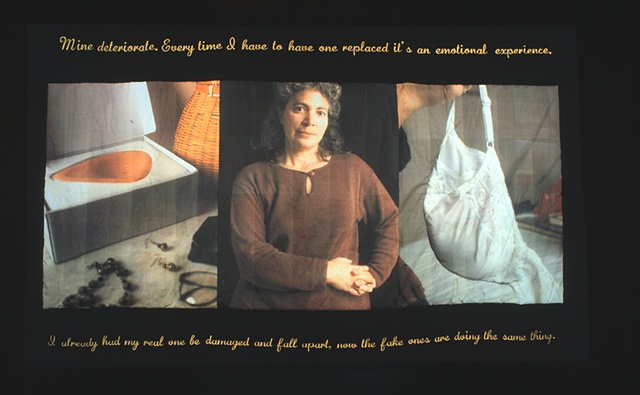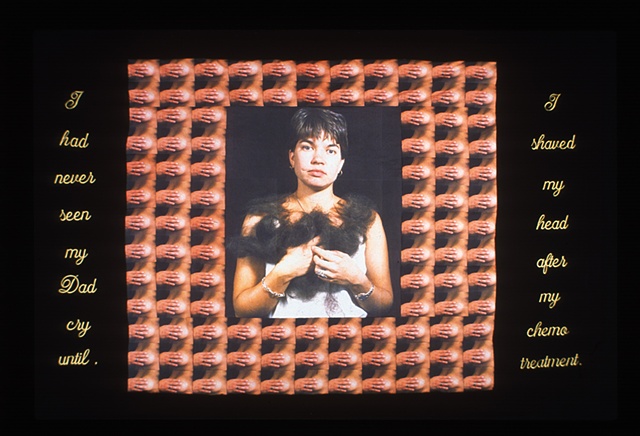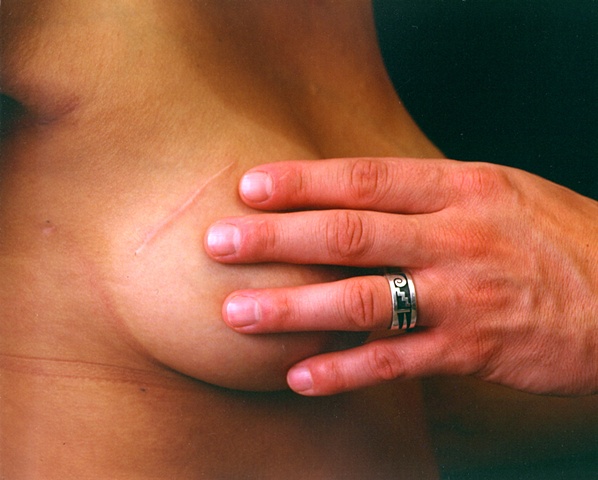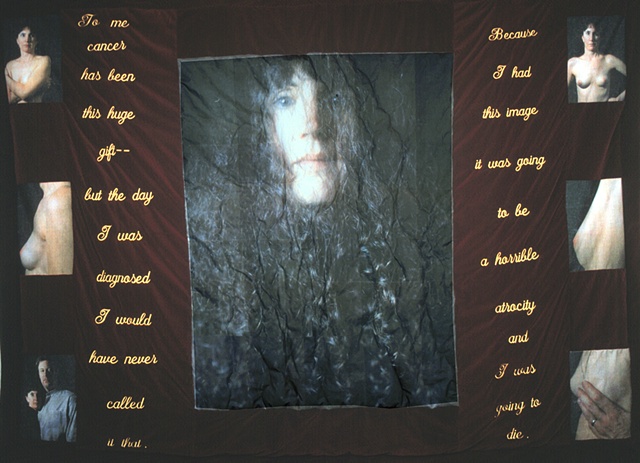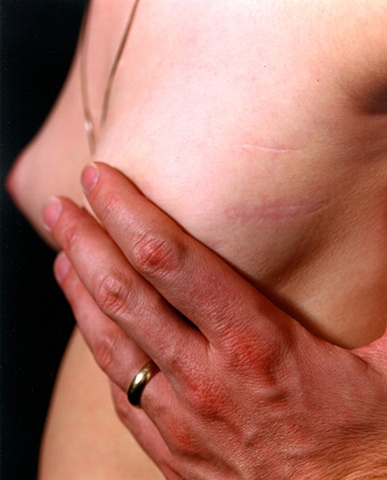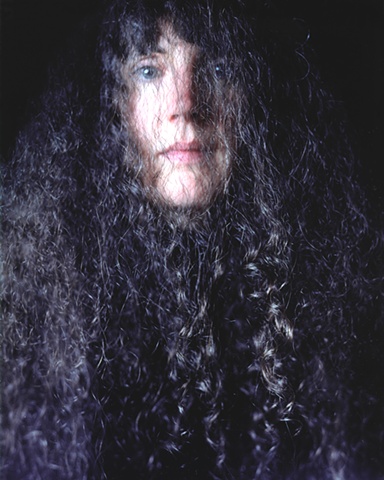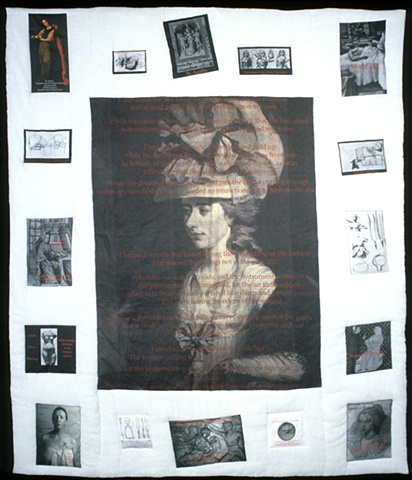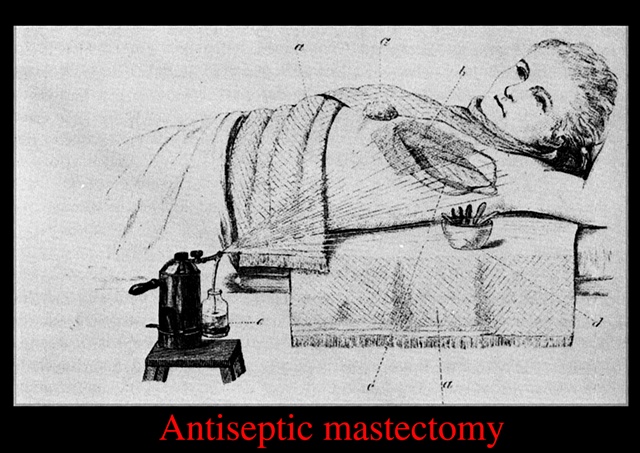common threads
As undergraduate in college, my mother called, to tell me, that her best friend, and one of my personal female heroines, Lovey Meeker, was diagnosed with cancer. In fact she had thousands of small tumors in her brain. But tumors never start in the brain - they had metastasized from her breast. The next day I visited the gynecologist and as I laid down on the table, the doctor directed me to “look for bumps in a spiral-like fashion,” while she simultaneously checked my breasts for lumps that could be tumors. Lovey died the following year.
After Lovey’s death, I began addressing the complicated and tragic effects of breast cancer in my work. Cancer is an epidemic. In one year alone, cancer will kill nearly twice as many Americans as were killed in all of World War I and one woman in every eight will be diagnosed with breast cancer, in her life time.
After two years of interviewing and photographing these women, the work evolved into common threads, an exhibit of photographic quilts. The threads reference the surgical threads, the "threads" of bonding these women experience as they share their loss and the threads used to sew these quilts and make portraits of these women. In my family and others’, the quilt has been an object of comfort. It was also a way for the women in my family to make their own mark, when it was not always appropriate for a woman to be heard. It is an object with which my mother told me stories and defined our female, familial history.
The quilt can also be understood as an object of comfort. But by placing such an uncomfortable subject on a “soft” surface we can suggest the difficulties of dealing with a disease, such as breast cancer. The quilts can become an object with which to display this traumatic and uncomfortable information and also create a point of juxtaposition. The quilts are beautiful, seductive objects. They are made of velvet and are embroidered in Gold script. They pull the viewer into a portrait of a woman, who by normal standards of American Beauty, has been disfigured. I hope as the viewer becomes engaged with this visually appealing object of comfort that they also redefine their normal assumptions of beauty.
As an artist, I am attempting to walk the fine line between activism and aesthetic practices. As Jim Goldberg has said, “I am interested in telling stories and dispelling stereotypes.” I am interested in bearing witness. I want to create images of powerful women, images which speak of the depth of experience and not of the victimization of disease. As Susan Sontag states about cancer, “Victims suggest innocence. And innocence, by the inexorable logic that governs all relational terms, suggests guilt.” I am searching for my own everyday heroines. I am looking for the inner, uncommercial, un-compromised, atypical beauty in women whom many choose to define as no longer beautiful.
